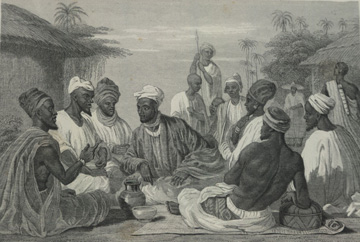Oyo Empire

The Oyo Empire was a powerful Yoruba state in the modern country of Nigeria. It began in the 1300s in the West African savannah north of the tropical forests where other Yoruba peoples lived. Being in the savannah proved beneficial, as Oyo could use horses, which were unable to live farther south (due to the tsetse fly). Using this armored cavalry, the empire was able to extend its reach across parts of what is now northern and western Nigeria. Oyo was generally unable to penetrate to the coast except where the savanna reached southward to the ocean in Benin. There, Oyo forced the kingdoms of Allada and Dahomey into subordination which gave the empire access to European trade.
The empire grew during the eighteenth century, as it became more involved in slave trading. Oyo also maintained it traditional position as brokers and traders between Yorubas to the south and Hausas to the north. Enslaved laborers provided food for the empire from their work on Oyo royal farms. Surplus labor, when available, was sold to the Atlantic coast.
In the late eighteenth century, the empire came to rely too much on slave sales to Europeans—when the trade decline and eventually ended, Oyo suffered. As the state’s income and authority declined, some of its subjects began to rebel. The empire eventually fell to the superior forces of the Fulani Empire from northern Nigeria in 1835.
History & Memory
Related Pages:
-
 Ankle bracelet
Ankle bracelet
-
 Slave History Museum, Calabar
Slave History Museum, Calabar
-
 Olaudah Equiano
Olaudah Equiano
-
 Ancona Robin John and Little Ephraim Robin John
Ancona Robin John and Little Ephraim Robin John
-
 Ouidah
Ouidah

